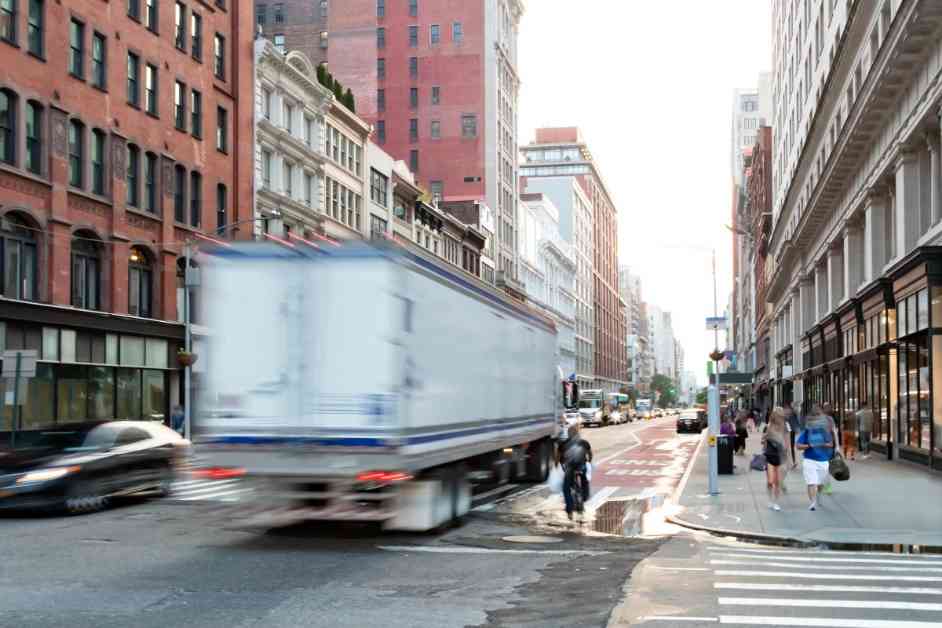The city of New York is taking a significant step towards reducing truck traffic and pollution on its streets with the implementation of a delivery “microhub” pilot program. This innovative initiative aims to replace traditional trucks with smaller, more sustainable methods of last-mile delivery, such as handcarts, electric vans, and e-cargo bikes. By providing designated spaces for truck drivers to transfer their cargo to these greener alternatives, the city hopes to minimize the environmental and safety impacts associated with large delivery trucks in urban areas.
The Rise of Delivery Microhubs in Brooklyn and Manhattan
The Department of Transportation (DOT) recently announced the advancement of the delivery microhub pilot program, signaling a commitment to cleaner and greener package delivery in the city. These microhubs will serve as centralized locations where truck drivers can unload their goods and transfer them to smaller, more sustainable vehicles for final delivery to customers. This shift towards more environmentally friendly transportation methods is a crucial step in reducing the carbon footprint and congestion caused by traditional delivery trucks on city streets.
According to DOT Commissioner Ydanis Rodriguez, the microhubs will offer a more sustainable and efficient way to make deliveries while decreasing the number of large trucks on the roads. The initiative is part of a broader strategy to address the significant increase in delivery truck traffic in New York City, particularly to residential areas. Before the pandemic, only 40% of deliveries were directly to consumers, but that number has surged to 80% in recent times, leading to a spike in truck-related emissions and safety hazards.
Addressing Environmental and Safety Concerns
The proliferation of delivery trucks in neighborhoods like Red Hook has raised concerns about pollution and traffic congestion. Residents have reported exhaust pollution and gridlock caused by the constant presence of delivery vehicles, which often obstruct bike lanes and double-park on streets, posing risks to motorists, cyclists, and pedestrians. To combat these issues, the city has been exploring alternative delivery methods, including the use of sail freight and cargo bikes for last-mile deliveries.
In response to these challenges, the DOT authorized the use of cargo bikes for deliveries on city streets, paving the way for a more sustainable and efficient delivery system. By integrating e-cargo bikes with the microhub pilot program, the city aims to reduce truck traffic and promote eco-friendly transportation modes. The introduction of microhubs in strategic locations like Greenpoint, Clinton Hill, and the Upper West Side will enable businesses to transition to greener last-mile transport options within designated hubs, minimizing the negative impact of traditional trucks on city streets.
Implementation and Impact of Microhubs
The three-year pilot program will see the opening of microhubs in key neighborhoods, with plans to establish at least 20 hubs in the first year alone. The proposed locations for microhubs in Brooklyn, such as Greenpoint and Clinton Hill, are strategically positioned beneath the Brooklyn-Queens Expressway to facilitate efficient cargo transfer and minimize disruption to traffic flow. These hubs will be operated by local businesses, who will be responsible for transitioning their deliveries to sustainable last-mile transport methods within the hub premises.
Deputy Mayor for Operations Meera Joshi emphasized the importance of the microhub pilot in reducing truck traffic and creating a safer environment for New Yorkers. By encouraging the use of lower-impact vehicles for deliveries, the city aims to streamline the surge in online deliveries while reducing the prevalence of double-parked trucks and ad-hoc unloading zones on city streets. Through data collection and analysis, the city plans to evaluate the effectiveness of the microhub pilot in replacing truck trips with greener transportation methods and improving curb management.
In conclusion, the introduction of delivery microhubs in Brooklyn and Manhattan represents a significant step towards a more sustainable and efficient delivery system in New York City. By promoting the use of eco-friendly last-mile transport options and reducing the reliance on traditional trucks, the city is taking proactive measures to address environmental concerns and enhance street safety. As the microhub pilot program progresses, it is essential to monitor its impact on truck traffic, pollution levels, and overall delivery efficiency to ensure a greener and more sustainable future for urban logistics.
